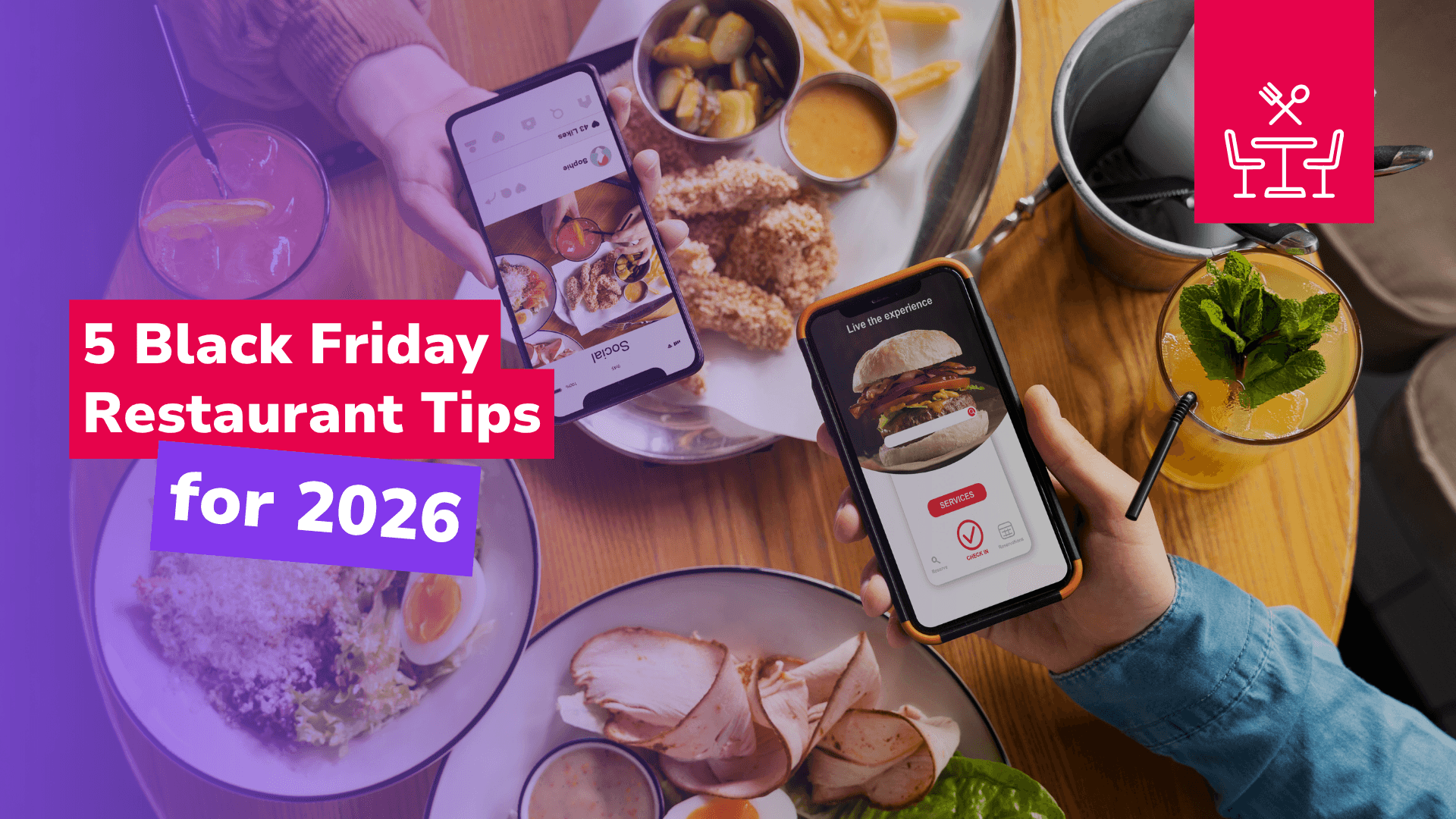Ever walked into a packed food hall and wondered why one vendor’s line stretches into oblivion… while the next stall over looks like it’s closed for the day? You’re not alone and the mystery isn’t just about menu.
Food halls are booming worldwide, with industry revenue expected to hit $573.9 million by 2025, growing at a CAGR of 8.7%. In the U.S. alone, over 340 food halls are open, and 127 more are under construction. Gen Z, Millennials, and hybrid workers fuel the trend, drawn to variety, convenience, and more curated dining experiences.
But with popularity comes pressure, and not every stall is thriving equally.
Operators often face a frustrating puzzle: great food, no foot traffic. Meanwhile, other vendors coast on momentum and crowd psychology, raking in sales just by looking busy. What gives?
This blog dives into the psychology behind those lopsided lines, the silent rules of food hall success, and how smart, subtle tech can help redistribute demand, without changing your menu.
Let’s explore why food hall diners line up where they do—and how to make sure your stall is the one they’re lining up for.
The Great Food Hall Mystery
Picture this: it’s lunchtime at a packed food hall. The air is filled with a dozen different cuisines' sizzling, steaming, spicy smells. But almost everyone (seriously, nearly everyone) is queued up at one stall.
What’s the draw?
It’s not always about the food. That busy stall might be selling nearly identical dishes to the others, maybe even at higher prices. The real difference lies in perception. A glossier menu board, more vibrant plating, or just the right mix of lighting and layout can create an almost magnetic pull. Even something as subtle as upbeat music or faster-moving staff can give off the energy of “this is the spot.”
It’s a bit of an illusion, but one that works. People are drawn to confidence and cues of popularity.
When one vendor looks like it knows what it’s doing, it naturally becomes a beacon. And when the neighbouring stall doesn’t update its signage or still lists its dishes in tiny font on a chalkboard menu from 2012, it fades into the background regardless of how good the food actually is.
A little goes a long way in the crowded, competitive ecosystem of food halls. And in many cases, the mystery of the line isn’t a mystery at all, it’s psychology at play.
The Psychology of the Line
Humans are hardwired to look for social proof. It’s a survival instinct dressed up as a lunch decision.
In psychology, this is called herd mentality, the idea that we tend to follow the crowd, especially when we’re unsure.
If dozens of people are lining up at one stall, we assume it must be good. After all, how could that many people be wrong?
That’s the principle of informational social influence.
We take cues from others to shape our own decisions, particularly in unfamiliar or ambiguous situations (like choosing between ten equally good-looking food stalls).
Then there’s risk aversion.
A long line suggests that someone else has done the vetting, so it feels safer. There’s also another form of psychological validation happening: if we have to wait, it must be worth it.
This is tied to the effort justification effect.
The more effort we put into something (like queuing), the more we believe it has value.
Add in a little FOMO(fear of missing out), and suddenly that line isn’t just a sign of good food, it’s a magnet.
In the end, the psychology of the line isn’t just about hunger. It’s about trust, safety, and belonging. We line up because it feels like the right thing to do, even if we don’t really know why.
That is the psychological receipt of line queues in food halls. How to cater to customers who don’t know how to choose? Let’s explore!
What Food Hall Diners Really Want
"People don’t always know what they want until you show it to them."
Steve Jobs
Ask diners what they value, and they’ll tell you speed, affordability, and convenience. But what they respond to( often without realising) is subtle psychology at play.
So, if it’s that easy, why do some stalls struggle even with great food?
Because no one wants to decode a puzzle to order a taco.
You could have the most mouthwatering flavours in the whole food hall, but you're already losing customers if your stall feels like a guessing game. Menus that read like spreadsheets, unclear signage, overwhelming options, and slow prep times all create friction. And in a space where people are scanning and deciding in under ten seconds, friction is fatal.
Food halls aren’t just about food. They’re about flow.
When a stall lacks visual hierarchy and doesn’t signal clarity or speed, diners walk right past it, sometimes without even realising it. In a rush, people default to the easiest decision. That’s often the line that’s already formed, or the menu that looks simplest to navigate. People follow the crowd not just for the food, but because it feels safer and less risky.
Without digital ordering or a clean-line system, stalls stall. Diners don’t want to ask questions, hold up the line, or trust what they see—and if what they see is confusion, they keep moving.
The irony? Some of these quiet stalls may be serving the best food in the building. But in a food hall, perception is momentum, and momentum is everything.
How to Shift the Line Without Starting a Food Fight
1) Let Your Menu Work Harder Than Your Staff
Turn every guest interaction into a chance to upsell and inform.
Attention spans are short in a fast-paced food hall, and queues move fast. But that doesn’t mean your guests should miss out on discovering your signature dishes, new items, or seasonal specials.
Interactive menus can increase average order value by up to 20%
Statista
Modern digital menus (especially those with visual, multilingual, and interactive features) go beyond displaying food options. They are also your salespeople. With built-in allergen filters, dietary tags, and thoughtful suggestions, they guide customers toward higher-margin dishes and larger orders while reducing wait times.
2) Streamline Orders Without Losing the Human Touch
Customers in food halls want speed, but not at the cost of service quality. Enabling guests to scan, order, and pay from their phones reduces congestion and minimises errors, especially during peak hours.
But beyond convenience, digital ordering systems allow for personalisation; guests can see past orders, browse recommendations, and even reorder favourites in seconds.
For operators, this means fewer errors, faster table turnover, and real-time updates to their kitchens.
77% of restaurants achieve increased efficiency with implementation of new technology.
Restaurant Technology News
3) Listen While They’re Still at the Table
Feedback is only valuable if it’s timely. Most food halls don’t have time for lengthy feedback forms or post-dining surveys.
Real-time feedback tools help you catch dissatisfaction before it becomes a bad review. Whether it’s a lukewarm meal or a long wait, digital platforms make it easy for guests to share their experience discreetly while at their table.
This instant loop lets you respond quickly, fix issues on the spot, and even delight guests with recovery offers.
4. Use Data, Not Guesswork, to Shape Your Menu
Which dishes are consistently ordered together? What’s underperforming? What’s driving up your food cost with little return?
Access to real-time sales data, customer behaviour, and menu heatmaps helps you make better decisions, optimising your business for profitability, efficiency, and satisfaction. With demand forecasting tools, you’ll always know when to prepare more… or waste less.
5) Let Guests Pre-Order to Skip the Queue
According to the National Restaurant Association, 70% of surveyed people said they’d use a smartphone app to place an order, and 65% said they’d use an app to pay for their meal.
Your audience moves fast, and every minute saved is a win. Pre-ordering lets busy diners place and pay for their meals before they arrive, so their only wait is for a fresh meal, not a ticket number. This is essential in fast-paced food halls, where guests are always on the go, looking to move to the next adventure.
Pre-ordering benefits both businesses and guests.
Businesses predict traffic and kitchen demand,
While guests avoid long waits and crowded spaces.
It’s a win-win for both the customer and the restaurant. As consumers grow more accustomed to using their phones for everything, applying that convenience to food orders is a natural next step.
Integrating pre-ordering into your food hall gives guests more time to relax and savour their meals, without the stress of waiting in line.
6) Make Every Guest Feel at Home.
When looking at enhancements, inclusiveness and accessibility must be the first features you consider. Food halls attract locals, tourists, and everyone in between.
Offering menus in multiple languages and designing for accessibility ensures everyone can comfortably interact with your brand.
A welcoming, inclusive digital interface helps people feel seen, understood, and valued, turning a quick meal into a memorable experience.
Let Tech Do the Quiet Heavy Lifting: Transformation of Food Halls
Technology quietly does the heavy lifting in bustling food halls, making things run smoothly without drawing attention.
It streamlines everything from optimising restaurant workflows to running targeted marketing campaigns and providing key insights about your restaurant and customers. Plus, it helps you connect with diners through inclusive features like voice explanations, adjustable font sizes, dark/light modes, and more.
Tech’s not just about making things easier; it’s about enhancing the entire dining experience for everyone.
Real-World Win: How FineDine Benefited Antalya Airport's Food Halls
At Antalya Airport, FineDine’s smart ordering solutions helped transform the food hall experience. Here’s how:
Passengers can pre-order meals and pick them up quickly, reducing wait times.
With pre-ordering and mobile payment options, there’s less time spent waiting in line.
Diners can filter menus based on dietary preferences and check restaurant details directly from their phones.
Restaurants saw smoother operations and increased order sizes thanks to digital menus and smart solutions.
By implementing FineDine’s system across 28 restaurants, BTA improved efficiency, saved time for travelers, and made the dining experience more enjoyable for everyone.
Final Words: One Platform, Endless Possibilities
Restaurant owners in food halls need to stay agile and ready to adapt in a fast-moving environment where timing is everything. It’s not about being the first to arrive, it’s about being perfectly on time. Scanning competitors, identifying what resonates with customers, and knowing them inside out are all key to staying ahead.
However, once you’ve gathered the research and insights, the next challenge is using that data effectively. The solution? The right technology. A platform that brings together customer experience, operational efficiency, and data-driven growth.
That’s where FineDine steps in. What started as a digital menu solution became a complete digital growth platform. Tailored to restaurants of all types, especially those in high-pressure environments like food halls, FineDine helps boost order values, improve customer retention, and streamline operations without overwhelming your team.
With FineDine, you don’t just gather data; you leverage it for smarter decision-making, more personalised customer experiences, and seamless operational flow.
Ready to transform your challenges into growth?
Online Ordering System for Restaurants, Delivery & Pickup | FineDIne


